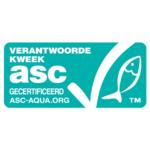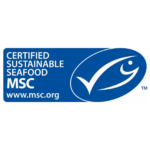Chub mackerel
Atlantic Ocean, central east (FAO 34)
Midwater otter trawl, Purse seines
- Jan
- Feb
- Mar
- Apr
- May
- Jun
- Jul
- Aug
- Sep
- Oct
- Nov
- Dec
The stock of chub mackerel in this area is being maximally fished. The stock size is under the MSYMSY:
Theoretically the greatest possible 'safe' catch, in which fish populations have sufficient size to reproduce in the long term. level. It is estimated that with the current fishing pressureFishing pressure:
Fishing pressure is a result of the fishing effort/amount of fishing on a stock, which determines the fishing mortality. Fishing mortality is the share of the fish stock that dies annually as a result of fishing., the size of the stock stays the same.
The quantities of bycatchBycatch:
Species caught next to species targeted for fishery. By-catches can consist of non-commercial species and species that are too small, and can be kept (this part is sometimes called by-product) or thrown back into the sea (discards). and discardsDiscards:
Unwanted by-catch, which is thrown back because there is no quota, the market price is too low, or the fish is below the legal minimum landing size. Discards can be alive or dead. in the midwaterMidwater otter trawls:
A fishing technique whereby conical nets are dragged through the water column and are kept open by large square 'otter planks'. otter trawl fishery are higher than in the purse seine fishery. There is no damage to the seabed because the gear doesn’t touch the bottom.
There is a managementManagement:
The regulations surrounding fisheries and aquaculture that ensure that production is carried out within legal frameworks and that sustainability can be assured. plan for the fishery by European vessels in the eastern Atlantic Ocean, but not for chub mackerel specific. The local fishery is hardly managed.




